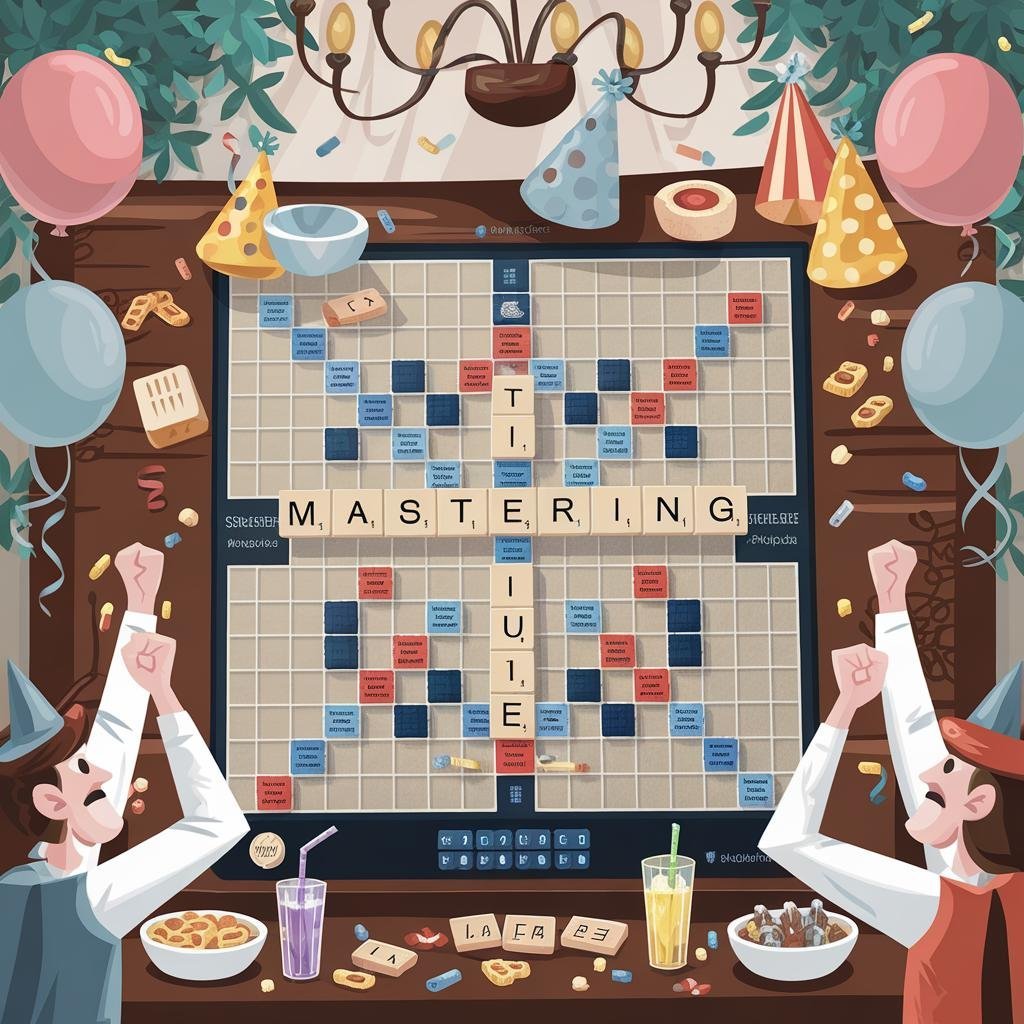Disclosure: This Post Contains Affiliate Links; We earn a commission on purchases.
Are you tired of losing at Connect Four? Do you want to improve your gameplay and dominate your opponents? Look no further! In this Connect Four strategy guide, we will reveal winning strategies and techniques that will help you outsmart your opponent and become a Connect Four champion.
Connect Four is not just about connecting four discs; it’s a game of strategy and foresight. By carefully planning your moves and anticipating your opponent’s next move, you can gain the upper hand and secure victory.
Key Takeaways:
- Prioritize different types of connections: horizontal, vertical, and diagonal.
- Create double threats and force your opponent into disadvantageous moves.
- Recognize patterns and use them to your advantage.
- Utilize zig-zag patterns to create multiple winning opportunities.
- Master defensive awareness and block your opponent’s attempts.
Table of Contents
Understanding Different Types of Connections
In Connect Four, understanding the different types of connections is essential for strategic gameplay. Knowing when to prioritize horizontal, vertical, or diagonal connections can significantly impact your chances of success.
Horizontal Connections
Horizontal connections are the most straightforward to spot and create in Connect Four. They involve aligning four discs in a row horizontally.
Advantages:
- Horizontal lines are more visible and easier to complete.
Disadvantages:
- Opponents can easily identify and block horizontal connections.
Vertical Connections
Vertical connections involve aligning four discs in a column vertically. These connections are less obvious but can be highly effective when you control a specific column.
Advantages:
- Vertical connections are less predictable and can catch opponents off guard.
Disadvantages:
- Vertical connections are dependent on controlling a specific column.
Diagonal Connections
Diagonal connections are the most challenging to spot and block in Connect Four. They involve aligning four discs diagonally.
Advantages:
- Diagonal connections are harder for opponents to anticipate and block.
Disadvantages:
- Creating diagonal connections requires opportunities and careful planning.
By understanding and utilizing different types of connections, you can optimize your strategic approach in Connect Four and gain an upper hand against opponents. Next, let’s explore the importance of forcing moves and double threats in the game.
Forcing Moves and Double Threats
When it comes to playing Connect Four, forcing your opponent into making specific moves and creating double threats can greatly enhance your chances of winning. These strategic maneuvers require careful planning and forward-thinking, ensuring that you maintain control over the game.
A forced move is a move that compels your opponent to play in a specific column or position, ultimately benefiting your own gameplay. By strategically placing your discs, you can limit your opponent’s options and set up favorable conditions for yourself. This tactic allows you to dictate the flow of the game and manipulate the board to your advantage.
Double threats, on the other hand, involve creating two or more viable paths to victory simultaneously. By strategically positioning your discs, you force your opponent into a difficult decision, as they are faced with the challenge of blocking multiple winning opportunities. This tactic adds an additional layer of complexity for your opponent and increases the chances of securing a win for yourself.
“Forcing your opponent into making moves that benefit you and creating double threats are crucial strategies in Connect Four. A forced move can limit your opponent’s options and set up favorable conditions for yourself. Double threats give you two different paths to victory, making it difficult for your opponent to block both.”
Implementing forcing moves and double threats requires strategic thinking, careful observation of the board, and an understanding of your opponent’s gameplay tendencies. By mastering these strategies, you can gain an upper hand in Connect Four and increase your chances of coming out victorious.
Illustrative Example:
Let’s consider the following scenario:
| Column 1 | Column 2 | Column 3 | Column 4 | Column 5 | Column 6 | Column 7 | |
|---|---|---|---|---|---|---|---|
| Row 1 | – | – | – | – | – | – | – |
| Row 2 | – | – | – | ● | – | – | – |
| Row 3 | – | – | – | ● | ● | – | – |
| Row 4 | – | ● | – | ● | ● | ● | – |
| Row 5 | – | ● | – | ● | ● | ● | ● |
| Row 6 | ● | ● | ● | ● | ● | ● | ● |
In this scenario, it’s your turn and you have a double threat. Placing your disc in either column 3 or column 6 will give you two different paths to connect four and secure a win. Your opponent will face a difficult decision, as they will have to block one path while leaving the other open.
By utilizing forcing moves and double threats effectively, you can keep your opponent on their toes, increase the complexity of the game, and significantly improve your chances of winning.
Continue reading to learn about recognizing patterns and creating traps in Connect Four.
Recognizing Patterns and Creating Traps
In the game of Connect Four, strategic pattern recognition and trap-setting skills can give you an edge over your opponents. By identifying and utilizing various patterns, you can create multiple winning opportunities and confuse your adversary.
Here are some key patterns to recognize and incorporate into your gameplay:
- Three-in-a-row: Forming a line of three consecutive discs can set up a potential winning move.
- Stacked three: Placing three discs on top of each other in the same column can create a trap by forcing your opponent to block multiple directions.
- Alternate stacking: Alternating the placement of your discs between two columns can create a pattern that is difficult to counter.
- Ascending/descending diagonals: Building diagonally with a consistent rising or falling pattern can increase your chances of connecting four discs.
- Diagonal with a gap: Leaving a gap in a diagonal line can lure your opponent into a false sense of security, giving you a chance to complete the connection.
Remember, combining different patterns can lead to more complex scenarios and keep your opponent guessing. Use these patterns strategically to set traps, force defensive moves, and maximize your winning potential.
| Pattern | Description |
|---|---|
| Three-in-a-row | Forming a line of three consecutive discs. |
| Stacked three | Building three discs on top of each other in the same column. |
| Alternate stacking | Alternating the placement of your discs between two columns. |
| Ascending/descending diagonals | Creating diagonals with consistent rising or falling patterns. |
| Diagonal with a gap | Leaving a gap in a diagonal line to deceive your opponent. |
By recognizing patterns and executing strategic moves accordingly, you can increase your chances of outsmarting your opponents and achieving victory in Connect Four.
Utilizing Zig-Zag Patterns
Zig-zag patterns in Connect Four can be a powerful strategy to create multiple opportunities for victory. By understanding and utilizing these patterns, you can outsmart your opponent and increase your chances of winning the game.
Basic zig-zag: One way to utilize zig-zag patterns is through a basic zig-zag strategy. This involves alternating your discs between two columns, creating a diagonal-like pattern. This pattern can confuse your opponent and make it challenging for them to block your connections. Take a look at the example below:
| Column 1 | Column 2 | Column 3 | Column 4 | Column 5 | Column 6 | Column 7 |
|---|---|---|---|---|---|---|
| – | – | – | – | ● | ● | ○ |
| – | – | – | ● | ○ | – | ● |
| – | ● | – | ○ | ● | – | – |
| ● | ○ | ● | – | – | – | – |
Multi-directional zig-zag: Another zig-zag pattern is the multi-directional zig-zag. In this strategy, you extend the zig-zag pattern across three columns. This provides more flexibility in your gameplay and opens up the possibility for double threats. See the example below:
| Column 1 | Column 2 | Column 3 | Column 4 | Column 5 | Column 6 | Column 7 |
|---|---|---|---|---|---|---|
| – | – | – | – | ● | ● | – |
| – | – | – | – | ○ | – | ● |
| – | ● | – | – | ○ | ● | – |
| – | – | – | ● | – | ○ | ● |
Vertical-horizontal zig-zag: The vertical-horizontal zig-zag combines both vertical and horizontal strategies. By alternating between connecting vertically and horizontally, this pattern allows you to create multiple paths to victory and increases the difficulty for your opponent to block your moves. Check out the example below:
| Column 1 | Column 2 | Column 3 | Column 4 | Column 5 | Column 6 | Column 7 |
|---|---|---|---|---|---|---|
| – | – | – | – | ● | ● | – |
| – | – | – | – | ○ | – | ● |
| – | ● | – | – | ○ | ● | – |
| ● | – | – | – | – | ○ | ● |
These zig-zag patterns provide flexibility in your gameplay, make it harder for your opponent to block your connections, and increase your chances of winning. By strategically utilizing these patterns, you can create double threats and force your opponent to play defensively.
Predictive Thinking
Predictive thinking is a crucial skill in the game of Connect Four. It involves anticipating your opponent’s moves and strategizing your own moves accordingly. By thinking several moves ahead, you can set up future wins and adjust your gameplay to counter your opponent’s strategy.
Anticipating your opponent’s moves is an essential aspect of predictive thinking. By observing their previous moves and analyzing the current game state, you can gain insight into their game plan. This allows you to anticipate their next move and prepare your countermove.
Being aware of patterns is another key component of predictive thinking. Connect Four has various patterns that can be used to your advantage. By recognizing these patterns, such as three-in-a-row or diagonal configurations, you can strategically position your discs and create winning opportunities.
Playing strategically in multiple turns is an integral part of predictive thinking. Rather than focusing solely on the immediate move, you need to consider the overall game progression. This involves planning your moves in a way that sets up future wins while simultaneously obstructing your opponent’s progress.
Implementing predictive thinking in your gameplay can significantly enhance your Connect Four skills. It allows you to stay one step ahead of your opponent, anticipate their moves, and strategically position your discs to secure victory. By mastering this multi-turn strategy, you can become a formidable Connect Four player.
Benefits of Predictive Thinking
- Anticipating opponent moves
- Setting up future wins
- Outsmarting your opponents
- Creating multi-turn strategies
Example Connect Four Game: Applying Predictive Thinking
“I observed my opponent’s tendency to prioritize vertical connections. With this knowledge, I strategically placed my discs to block their vertical columns while simultaneously building diagonal connections. By thinking two moves ahead and predicting their next move, I set up a winning combination that secured my victory.”
| Move | Player One | Player Two |
|---|---|---|
| 1 | — | — |
| 2 | — | — |
| 3 | — | — |
| 4 | — | — |
| 5 | — | — |
| 6 | — | — |
| 7 | — | — |
Mastering Upper Layer Control and Center Column Dominance
In Connect Four, mastering upper layer control and center column dominance are two key strategies that can give you a significant advantage over your opponent. By implementing these strategies effectively, you can limit your opponent’s options and maximize your connective possibilities.
Upper layer control refers to strategically occupying the top rows of the board. By doing so, you restrict your opponent’s opportunities for connecting four discs in a row. This control adds an additional layer of difficulty for your opponent, making it harder for them to achieve victory.
Center column dominance, on the other hand, involves focusing your efforts on the middle column of the board. This column allows for the most versatile connections, as it intersects with both horizontal and diagonal paths. By prioritizing the center column, you increase your chances of forming connecting lines and creating winning combinations.
Mastering upper layer control and center column dominance requires strategic planning and careful decision-making. By combining these techniques, you can establish a strong position on the board and make it more challenging for your opponent to outmaneuver you.
Remember, Connect Four is a game of foresight and strategy. Implementing upper layer control and center column dominance will give you the upper hand and significantly improve your chances of winning.
Now let’s take a look at a sample game board to understand how upper layer control and center column dominance can be applied:
| 1 | 2 | 3 | 4 | 5 | 6 | 7 |
|---|---|---|---|---|---|---|
| x | x | x | ||||
| x | x | x | ||||
| o | o | |||||
| o |
In this example, the player using “x” as their disc has achieved upper layer control by placing their discs in the top rows. This limits the available spaces for the opponent to make connecting lines in the higher areas of the board. Additionally, the player has prioritized the center column, maximizing their potential connections and setting up multiple winning possibilities.
By analyzing and strategizing your moves with upper layer control and center column dominance in mind, you can significantly enhance your chances of winning at Connect Four.
The Importance of Defensive Awareness
When playing Connect Four, having defensive awareness is crucial to block your opponent’s attempts to connect four while setting up your own winning line. By recognizing potential patterns, using disguised threats, forcing blocks, and intervening before your opponent completes a four-in-a-row, you can strategically defend your position and increase your chances of victory.
One defensive strategy is to identify potential patterns that your opponent may be trying to create. By observing the placement of their discs and anticipating their next move, you can proactively block their progress. For example, if you notice your opponent aligning three discs in a row vertically, prioritize blocking the column they need to complete their four-in-a-row.
Disguised threats are another effective defensive tactic in Connect Four. Creating a disguised threat involves strategically positioning your discs to force your opponent into making moves that benefit you. By setting up a scenario where your opponent must choose between blocking one potential winning line or the other, you increase your chances of success.
Remember, defensive awareness is not just about blocking your opponent – it’s about strategically setting up your own winning opportunities while simultaneously hindering your opponent’s progress.
When executing defensive moves, it’s important to leverage forced blocking to limit your opponent’s options. By strategically placing your discs in key positions, you can force your opponent to make moves that benefit your overall strategy. This tactic puts pressure on your opponent and increases the likelihood of them making a suboptimal move, allowing you to gain an advantage in the game.
Defensive awareness also involves intervening before your opponent completes a four-in-a-row. By closely monitoring the board and anticipating your opponent’s moves, you can strategically block their progress and prevent them from achieving victory. This requires a combination of predictive thinking, pattern recognition, and proactive decision-making.
Defensive Awareness Checklist:
- Recognize potential patterns your opponent may be trying to create.
- Utilize disguised threats to force your opponent into making moves that benefit you, while hindering their progress.
- Strategically employ forced blocking to limit your opponent’s options.
- Intervene before your opponent completes a four-in-a-row by closely monitoring the board and proactively blocking their potential winning moves.
| Defensive Strategies | Benefits |
|---|---|
| Recognizing potential patterns | Proactively block your opponent’s progress |
| Utilizing disguised threats | Force your opponent into compromising moves |
| Forcing blocks | Limit your opponent’s options |
| Intervening before a four-in-a-row | Prevent your opponent from achieving victory |
Tips for Playing as Player One
When playing Connect Four as player one, you have the advantage of going first and dictating the play. To maximize your chances of winning, here are some tips:
- Start in the middle: As player one, begin by placing your first disc in the middle column of the bottom row. This provides a balanced starting position and allows you to have control over multiple directions.
- Focus on the middle column: Playing in the middle column gives you the flexibility to expand your connections horizontally, vertically, and diagonally. It sets you up for potential double threats and increases your chances of blocking your opponent’s moves.
Quotes:
“As player one, taking control of the middle column is a key strategy in Connect Four.” – Connect Four Champion
| Advantages | Disadvantages |
|---|---|
| Going first | Potential moves might be blocked by player two |
| Dictating the play | Opponent has a chance to react and strategize accordingly |
| Opportunity to set up multiple winning connections | Need to anticipate opponent’s moves and adapt strategy |
By starting in the middle, you create a solid foundation and maintain control throughout the game. Focusing on the middle column allows you to explore various connection possibilities and increases your chances of victory. Remember to anticipate your opponent’s moves and adapt your strategy accordingly to stay ahead.
Tips for Playing as Player Two
Playing as player two in Connect Four requires a different approach. Reacting appropriately to player one’s moves, playing in even rows, and countering their strategy can increase your chances of winning. It’s important to adapt and make strategic moves to level the playing field.
When playing as player two, your first task is to carefully observe player one’s opening move. Reacting appropriately means analyzing their move and identifying any potential threats or patterns they may be trying to create. Stay vigilant and anticipate their strategy to effectively counter their moves.
One effective strategy for player two is to focus on playing in even rows. By doing so, you can disrupt player one’s attempts to create a solid connection while creating multiple opportunities for your own winning moves. Playing in even rows allows you to establish a strong defensive position while maintaining a balanced gameplay.
As player two, it’s crucial to think strategically and plan several moves ahead. Pay close attention to the board and anticipate the consequences of each move. Look for opportunities to create double threats while blocking player one’s potential connections. This strategic mindset will give you an edge in the game.
“Playing as player two requires adaptability and a deep understanding of your opponent’s moves. Reacting appropriately to their strategy while playing in even rows can tilt the game in your favor.”
Key Takeaways:
- React appropriately to player one’s moves and counter their strategy.
- Play in even rows to disrupt player one’s plans and create your own winning opportunities.
- Think strategically and plan several moves ahead to establish double threats and block opponent’s connections.
By employing these tips, you can enhance your gameplay as player two and increase your chances of outsmarting your opponent in Connect Four.
The Parity Strategy
The parity strategy is a clever tactic that can give you an edge in Connect Four. By strategically playing in either odd or even rows, you can create winning opportunities and force your opponent into challenging positions.
When playing the odd rows, you leave one column nearly free by the end of the game. This forces your opponent, who is playing as player two, to place their piece in the last spot before your winning position in the column. This puts them in a difficult position, increasing your chances of victory.
The same strategy can be applied when playing in even rows as player two. By following the parity strategy in even rows, you can put pressure on player one and set up winning possibilities for yourself. It’s a strategic move that allows you to control the flow of the game and increase your chances of success.
Mastering the parity strategy requires careful planning and predictive thinking. By playing in the odd or even rows strategically, you can outsmart your opponent and secure your path to victory in Connect Four.
Conclusion
By mastering a combination of Connect Four strategies, implementing tips for playing Connect Four, and utilizing advanced Connect Four techniques, you can significantly enhance your gameplay and increase your chances of winning. Through understanding different types of connections, such as horizontal, vertical, and diagonal, you gain a strategic advantage by prioritizing the most favorable connections based on the current game situation.
Recognizing and utilizing various patterns in Connect Four allows you to create traps and multiple winning opportunities. By combining patterns and employing zig-zag strategies, you can create complex scenarios and confuse your opponent, ultimately increasing the likelihood of achieving victory.
Creating double threats and establishing forced moves are essential techniques in Connect Four. Not only do these strategies limit your opponent’s options, but they also provide you with multiple paths to victory, making it challenging for your opponent to counter your moves effectively.
Lastly, by employing predictive thinking and being defensively aware, you can anticipate and block your opponent’s attempts while setting up your own winning opportunities. This multi-turn strategy allows you to outsmart your opponents, take control of the upper layer of the board, dominate the center column, and secure your path to victory.

As the founder of Friends Game Night, Ryan channels his enthusiasm for gaming into a platform that celebrates the magic of gathering friends around the digital or physical tabletop. Through his website, Ryan shares insightful articles, reviews, and recommendations, aiming to inspire others to create their own memorable gaming moments.
Subscribe to Our Newsletter










